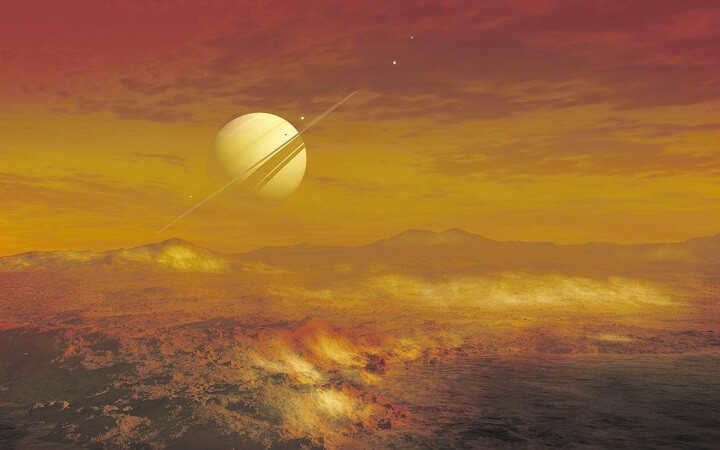Since I have always had a fascination for astronomy, I have often pondered the possibility of discovering life on other celestial bodies. However, as I delved into the vast realm of astronomy and explored the various planets, I came to a profound realization – our very own planet Earth is an extraordinary phenomenon, standing out among countless others in the universe. The sheer luck that life emerged on Earth is truly remarkable. In this article, I aim to elucidate the essence of planets and shed light on the exceptional qualities of some of these celestial bodies.
Definition of a Planet
A planet is a celestial body that orbits around a star. Planets possess a significant amount of mass, causing them to take on a spherical shape due to the force of gravity and their own gravitational pull. However, planets do not possess enough mass to initiate thermonuclear reactions and transform into stars. The most well-known example of a planet is Earth, which orbits the Sun and has a spherical form. Within our solar system, there are eight planets arranged in order of their distance from the Sun:
Except for Venus and Mercury, all of these planets have their own satellites, including the Earth’s satellite, the Moon.
The origins of the planets
Various hypotheses exist regarding the origins of the planets. One theory proposes that planets develop through the merging of minuscule celestial bodies. Alternatively, planets may take shape through gravitational collapse within the central region of a protoplanetary disk composed of gas and dust. Another notion suggests that planets arise from cosmic dust. The scientific community continues to debate these ideas, although there is consensus that the Earth was created through the collision of two entities, with one of them containing substantial quantities of iron.
Early concepts regarding the celestial bodies in our Solar System
Prior to the development of the telescope, there existed a general understanding of what defined a planet. The ancient Sumerians, for instance, possessed the ability to observe Venus in the sky. However, it was the Babylonians who first formulated a comprehensive theory about the nature of the planets. It is speculated that they were the originators of the practice of associating the planets with various deities. This tradition was later adopted by Ancient Greece, resulting in the familiar names of the planets: Mars, Saturn, Venus, Jupiter, and Mercury.
Undoubtedly, the planets are among the extraordinary phenomena within our expansive Universe! Only our home planet, Earth, has given rise to the existence of such a remarkable species as humanity. How many other planets in our Galaxy or even in the vast expanse of the Universe share similarities with our own Earth?
In my city, there exists a fantastic location known as the planetarium. I had the chance to visit this place when I was a child, and now I am fortunate enough to bring my own son. The field of science is constantly evolving – there are always new discoveries and confirmations of cosmic theories and laws. So, how exactly do we go about studying our planets? Allow me to explain further.
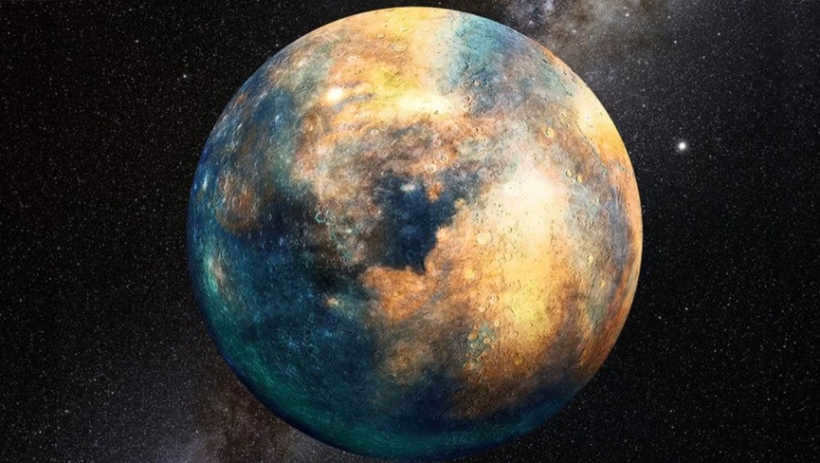
What is referred to as a planet
Planet – this term is known to every modern individual from an early age. But what is its meaning? According to the contemporary definition, it refers to a celestial object that orbits a star and receives its heat and light. In ancient times, only 5 celestial objects were given this designation:
As you may easily surmise, our Earth was not included – it was regarded as the center of the universe. But what about the Moon and the Sun? The fact is that both bodies significantly differed from the aforementioned ones in their characteristics, they were considered to be something completely different.
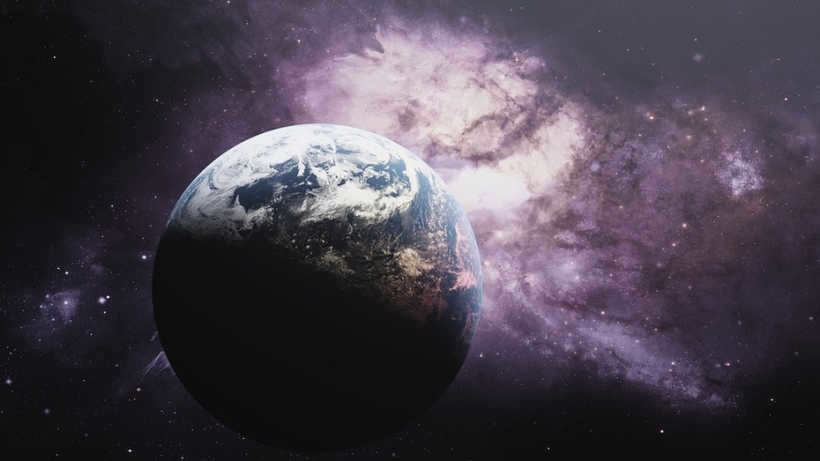
The term "planet" has a long history, with other previously unseen objects being designated as planets. In the 18th century, Uranus was discovered, followed by Neptune. The ninth celestial body, Pluto, was discovered in the early 20th century and held the status of a planet for a significant period of time. However, in 2007, it was controversially reclassified and stripped of its planetary status, a decision that many argue was unjust.
Studying Planets: Methods and Approaches
Planetology, a diverse field of scientific disciplines, focuses on the comprehensive study of planets and their various aspects. The areas of interest range from the planets’ physical and chemical properties to their satellites.
So, how do scientists go about studying these celestial bodies? The process typically begins with the deployment of a satellite, which gradually approaches the target planet for closer observation. Equipped with an array of sophisticated instruments, these satellites facilitate in-depth exploration and analysis.
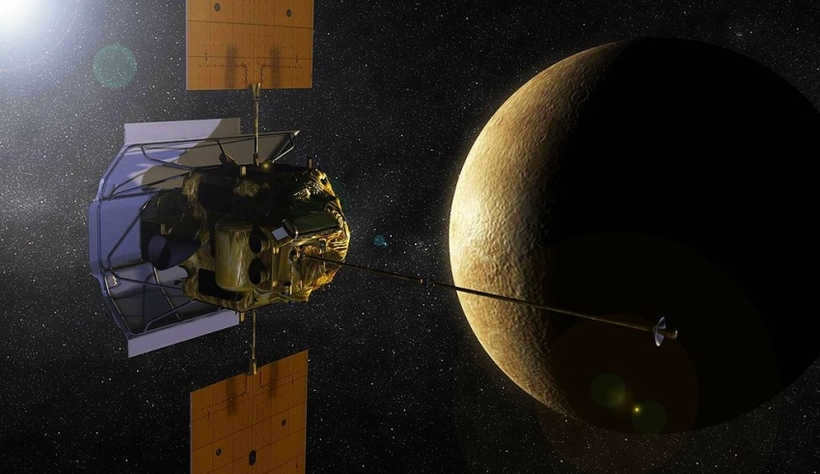
It is logical that different devices are needed to study objects with different properties. A “standard set” is required, which includes devices capable of performing the following operations:
- capturing images in the visible range;
- capturing infrared images;
- performing gamma-ray spectroscopy;
- detecting neutrons;
- capturing ultraviolet images;
- sensing radar;
- performing alpha-proton spectroscopy.
Last week, I had the opportunity to visit a captivating planetarium with my son. The experience was truly mesmerizing, as time seemed to pass by unnoticed. The knowledge I gained during the visit was so intriguing that I would like to share the main highlights with you.
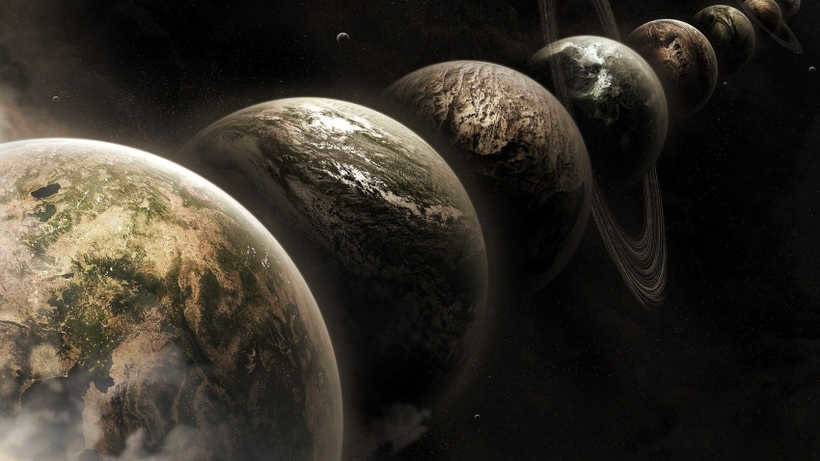
What does a planet represent
The planet we inhabit is one of numerous celestial bodies scattered throughout the vast universe. Naturally, these planets exhibit both similarities and distinct characteristics. When describing a planet, there are key attributes that can aid in determining whether a celestial body is classified as a planet. These include:
- being a solid, cold object;
- orbiting a star;
- maintaining its own orbit without any other celestial bodies;
- reflecting light rather than emitting it.
When examining our solar system, consisting of 8 planets, researchers pay special attention to our nearest celestial body, Mars. Undoubtedly, it is a captivating planet, bearing many similarities to our own in terms of its characteristics.
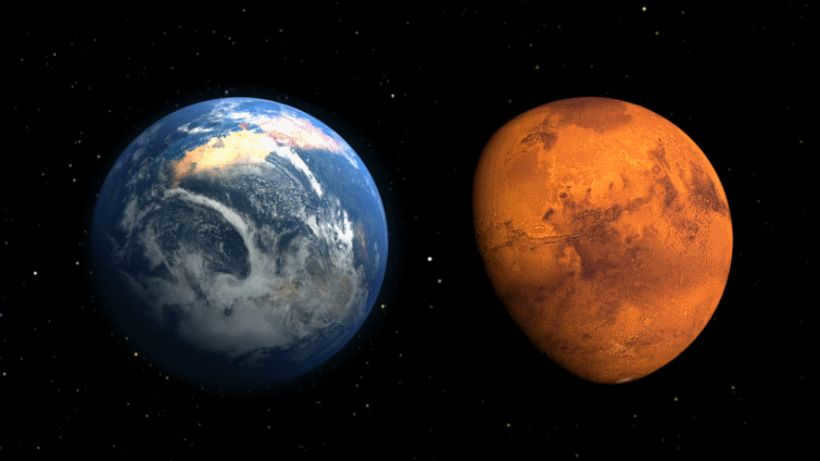
The Planet of Crimson
The potential existence of life on this celestial body has been a subject of discourse for a considerable duration. To be precise, this is the initial entity upon which the gazes of astronomers were fixated, in the optimistic quest for indications of life. Presented below are a few details concerning Mars..
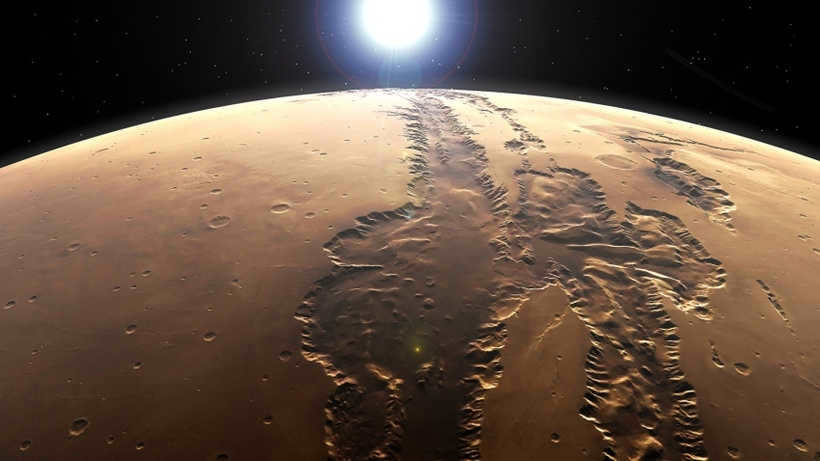
Mariner’s Valley is an immense gorge that surpasses the Grand Canyon in size on the North American continent. Its vast proportions are truly remarkable, with a length of nearly 5000 kilometers, a width of 250 kilometers, and a depth of 12 kilometers.
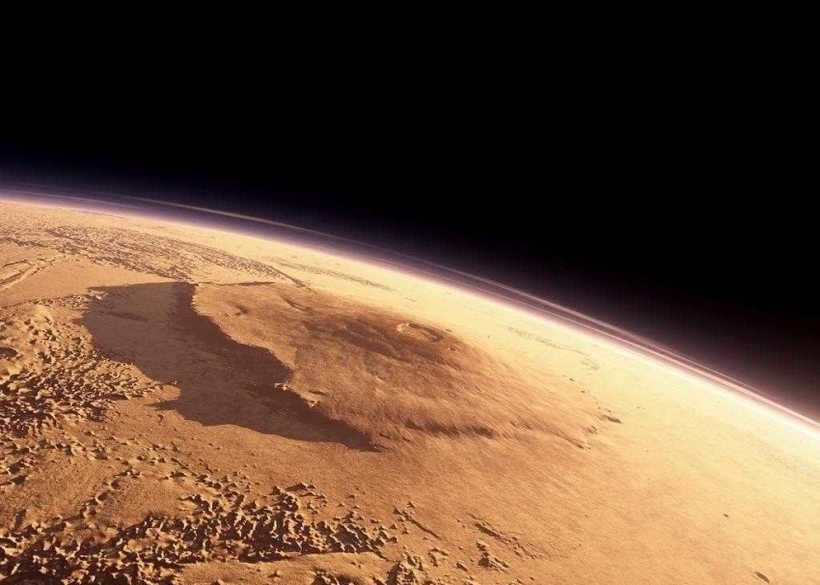
The highest mountain in our solar system is Mount Olympus. It reaches a height of approximately 25 kilometers.
Discovering Mars
For some unknown reasons, the planet is reluctant to reveal its secrets to humanity. Only a third of the probes that were sent have successfully landed and completed their missions. The remaining probes either failed or disappeared without a trace. Currently, the red planet is being explored by a state-of-the-art Mars rover called “Curiosity,” which started its mission in 2012. Throughout the years, thousands of images of the planet’s surface have been captured, and the rover has successfully accomplished its primary objective of searching for a habitable environment for microorganisms.

Thanks to the device, several noteworthy discoveries have been made, with the most notable being: the discovery of the core of Mars, a fossilized dinosaur skull, and the remnants of a dried-up lake.
My curiosity has always been piqued by the organization and composition of other planets. In movies, we often see only the terrifying aspects of extraterrestrial life. However, there are countless planets in the vastness of space, each unique in its own way yet sharing many commonalities.
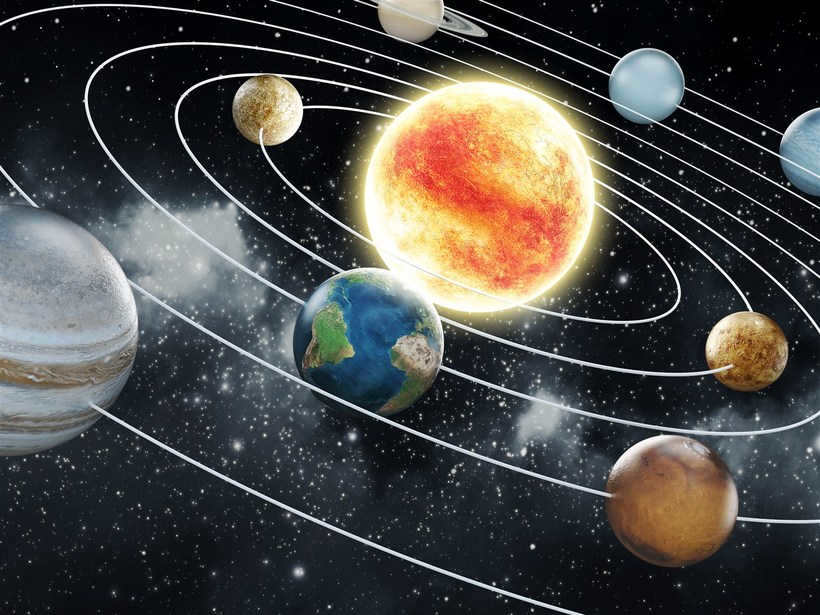
What is the definition of a planet?
A planet is an astronomical object that orbits around a star and possesses sufficient mass and gravitational force to assume a spherical shape and clear its orbital path of smaller celestial bodies. The gravitational pull of the star either attracts or repels these objects.
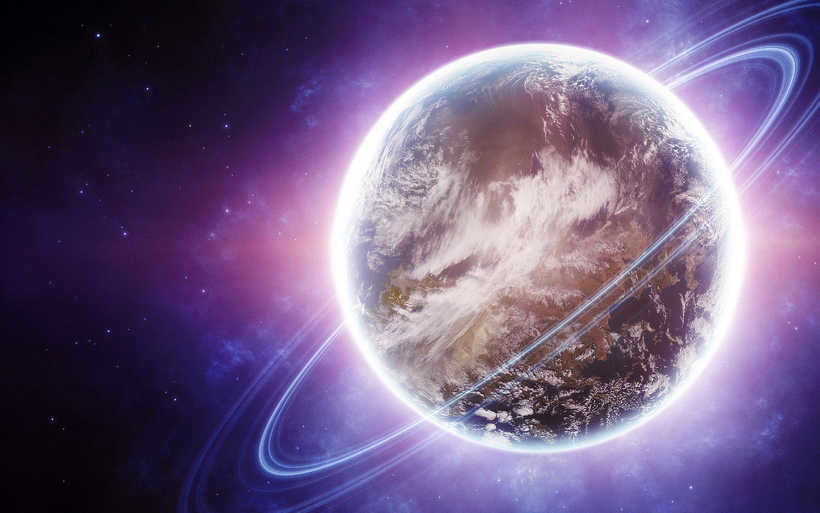
There are two main classes of planets: giant planets and earth-like planets.
Giant planets are characterized by low density, and there are four of them in our solar system:
Earth-like planets, on the other hand, have a solid shell, and there are also four of them:
In addition to these, our solar system also includes dwarf planets and cosmic bodies that do not meet the criteria to be classified as planets, but are not small enough to fall into other smaller categories. There are at least five of these:
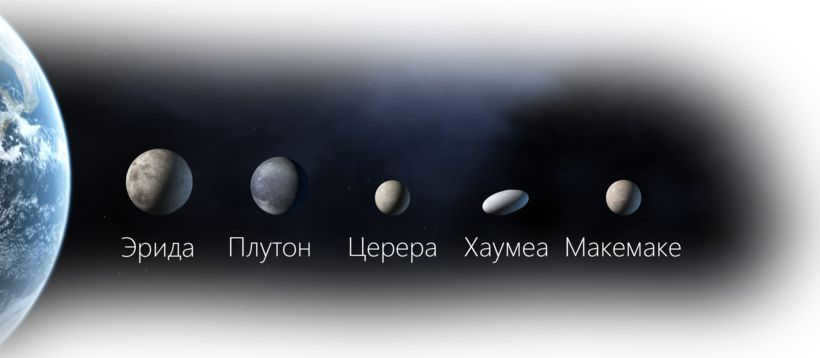
- Pluto, which was considered the ninth planet until 2006;
- Makemake;
- Haumea;
- Erida;
- Ceres.
Exoplanets: A Brief Introduction
It is widely known that, in addition to the familiar planets within our own solar system, there exist numerous other celestial bodies that have been discovered by scientists. These fascinating entities are known as exoplanets. The latest confirmed data reveals that a staggering total of 2049 exoplanets make up 1,297 planetary systems within our galaxy. Similar in size to the planets in our solar system, exoplanets also include larger counterparts that surpass even our own giant planets in scale.
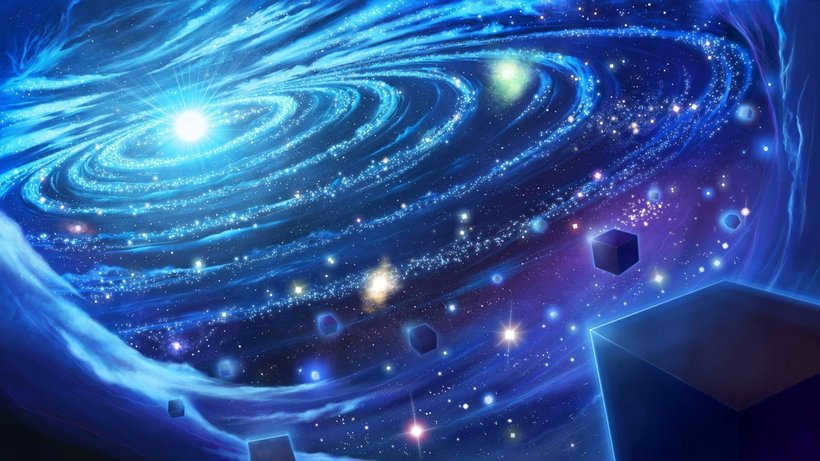
Planet Observation
You don’t need any special equipment to observe the planets; in fact, you can see them with just your eyes. However, if you want to see their structure, you’ll need a high-quality telescope. The optimal time to observe the planets is when they are in opposition, except for Mercury and Venus.

Recently, I stumbled upon an old children’s movie on one of the television channels. It was titled “Stranded in the Cosmos” and revolved around Soviet schoolchildren who find themselves on a planet within the Alpha Cassiopeia system. During their time there, they have a fascinating encounter with extraterrestrial beings. When I was younger, it felt like such encounters were imminent. However, as I delved into astronomy and further explored the subject in college, I realized that the chances of discovering life on other planets are extremely slim, at least with our current level of scientific knowledge.
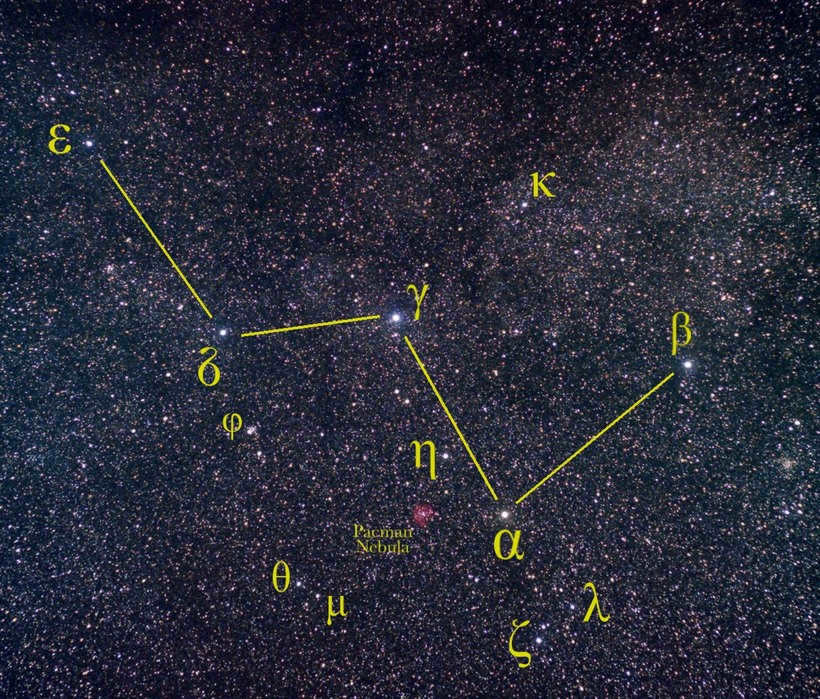
Planets nearby and far away
The discovery of a far-off planet in the Cassiopeia constellation was only confirmed in 2015. Presently, this planet is categorized as an exoplanet, meaning it is a planet outside of our solar system. The actual number of planets in existence is only eight, according to the International Astronomical Union’s classification in 2006. Besides Earth, there are three well-known Earth-like planets that are closest to us – Venus, Mars, and Mercury, as well as four more distant planets that are considered gas giants. These gas giants include Neptune, Saturn, Uranus, and Jupiter.

To classify a celestial body as a planet, certain criteria must be met:
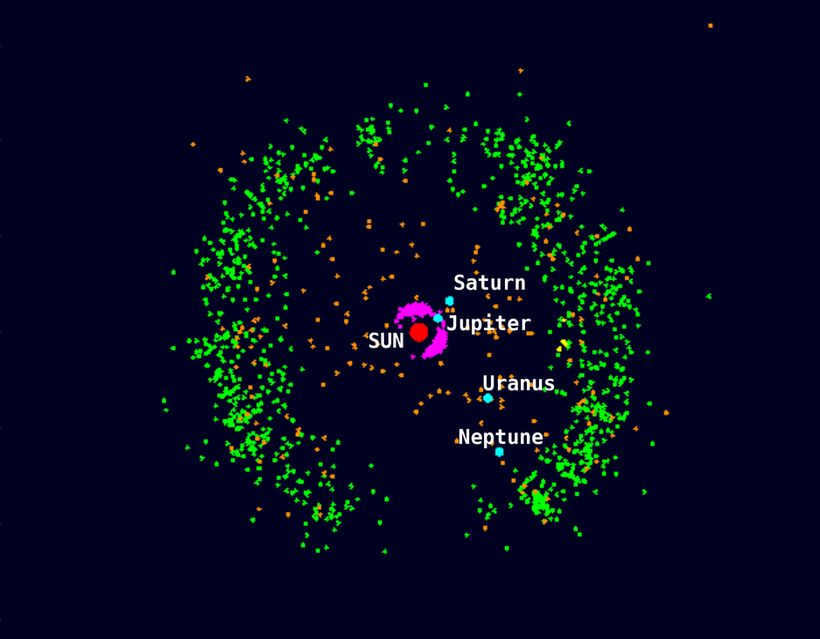
- Planet has a spherical shape due to the influence of its own gravitational forces;
- It revolves around the sun in an orbital path;
- Within its orbit, it is surrounded by a “space devoid of other celestial bodies.”
Due to that final requirement, Pluto was no longer deemed a planet and was instead categorized as a dwarf planet.
Planet hypotheses
It is important to mention the theory that a ninth massive planet is a gas supergiant. There are also some less probable hypotheses regarding the existence of two substantial Earth-like planets. Additionally, there are alternative hypotheses about undiscovered planets, although in all of these hypotheses, the orbits of said planets are larger than Pluto’s orbit. These hypotheses are based on the peculiarities of the orbits of objects within the Kuiper Belt, which encompasses small celestial bodies situated beyond Neptune’s orbit.
There is still a great deal of unexplored territory even within our own solar system. Plenty of uncharted areas remain. However, even if we don’t encounter intelligent life from the Alpha Cassiopeia system, I am hopeful that we will eventually make contact with extraterrestrial beings from other planets outside our solar system.
Reflecting on my own childhood, I recall gazing up at the vast expanse of stars and feeling transported to distant and alluring worlds. The universe is an enigma, and one can endlessly ponder its mysteries without finding definitive answers.
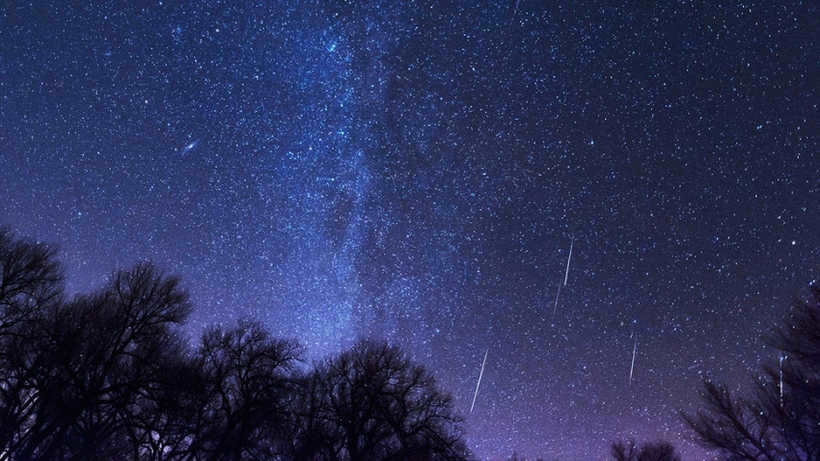
Definition of a Planet
A planet is a celestial body that orbits around a star, reflecting its light. It is a solid and relatively cold object in the vastness of the universe. The term “planet” derives from the Greek word “wandering,” as ancient scientists observed certain stars changing their position in the sky and moving across different constellations. These moving stars were designated as planets.
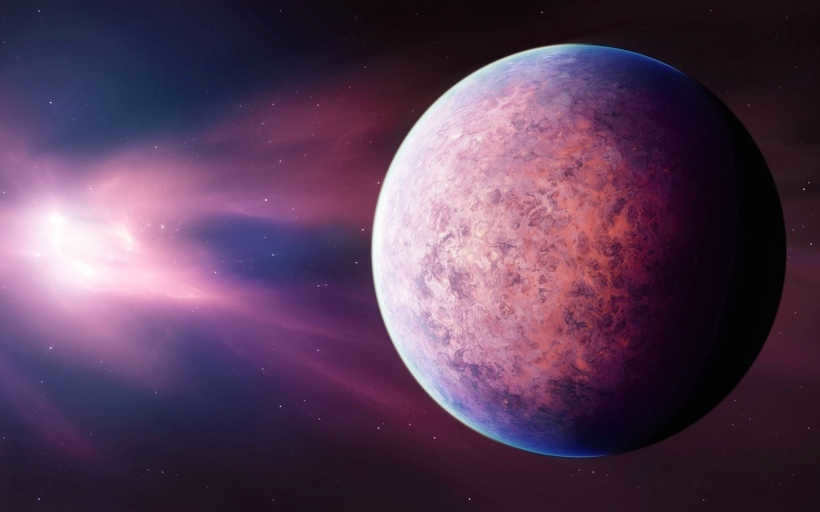
Exciting Information
Humanity’s fascination with distant worlds knows no bounds. Not long ago, there was only one planetary system – the solar system. With limited knowledge about our own system’s structure, scientists could only speculate about the existence of other star systems. It wasn’t until the end of the 20th century that the first planet outside of our system was discovered, and now there are over 1,000 confirmed planets. Here are some of the most intriguing facts about planets:
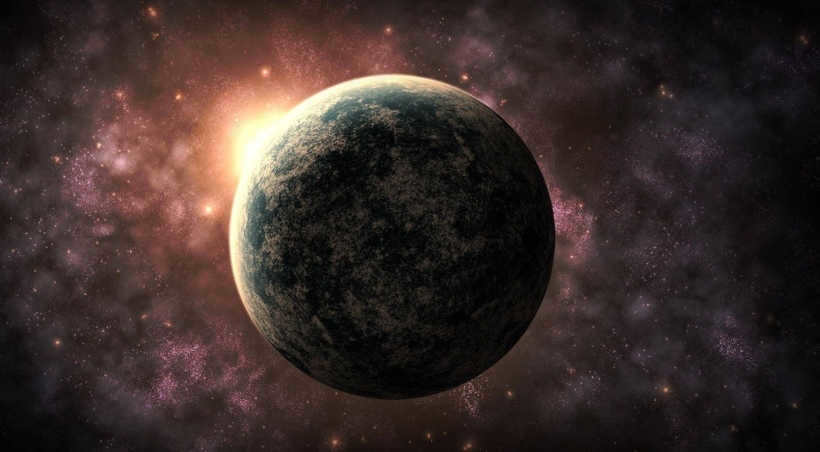
- A planet has been found with a crust made entirely of diamonds, measuring up to 3,000 kilometers thick;
- A water planet located 45 light years away from Earth has caught our interest due to the potential existence of “hot ice” and “superfluid water”;
- Pegasus V, a gas giant with temperatures reaching 3,000 degrees Celsius, experiences rainfalls of molten iron;
- The extreme pressure on Uranus and Neptune causes methane to transform into raining diamonds;
- Known as “The Dark Planet,” this celestial body reflects less than 1% of light rays due to its black surface.
- Corot-7b. It is surprising that due to its extreme temperature, the rocks on this planet undergo vaporization and then, upon condensation, fall as rock rain;
- From an astronomical perspective, our planet is considered to be part of the Sun’s atmosphere. It can be said that our planet is a part of the atmosphere of the sun.;
- The planet known as “the planet of the three suns.” is unique in having three luminaries.
In conclusion, our galaxy alone may contain trillions of planets, some of which could be similar to our own. Therefore, I believe it is inevitable that we will eventually come into contact with extraterrestrial civilizations.
During my early years, when I first discovered the existence of planets beyond Earth and the vastness of the universe, my mind was blown. However, I soon realized that the immense size of space means that it is only a matter of time before we encounter intelligent life. Contrary to their portrayal in movies, I believe these beings will be civilized and not pose a threat. In fact, we have already discovered several planets that bear a striking resemblance to Earth.

What defines a planet
It is a celestial body that is spherical in shape and has enough mass to not be classified as a star. (In other words, it does not undergo a self-sustaining thermonuclear reaction). This classification system is extremely helpful in avoiding confusion:
- If it is large (or heavy) and emits light, it is a star;
- If it is round, slightly smaller, and does not emit light, it is a planet;
- If it is round and relatively small, it is a dwarf planet;
- All other objects, such as asteroids, comets, satellites, and debris, are considered “little things” with varying shapes.
Planets in the Solar System
Currently, according to scientists’ observations through telescopes, there are 8 regular planets and 5 dwarf planets revolving around the Sun. While they share similarities, they also have numerous differences:
- Mercury – primarily consists of a metallic core. It is believed that the planet was once larger, but a collision with a massive asteroid caused the top layer to be stripped away.
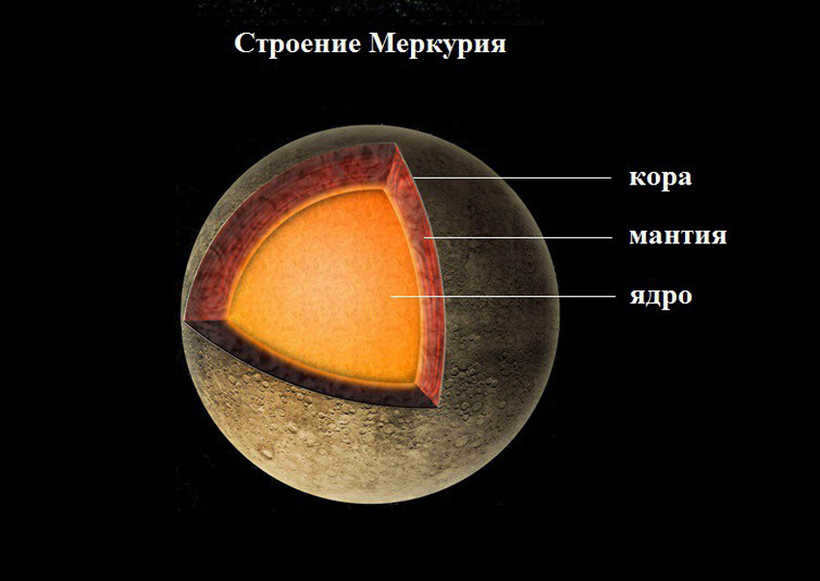
- Venus – possesses one of the densest atmospheres, making it visible in the evening sky to the naked eye (the atmosphere effectively reflects sunlight).
- Earth – you are already familiar with everything about it 🙂
- Mars – The planet’s red appearance suggests that it once had water (which oxidized the iron on the surface) and a thick atmosphere that prevented the water from evaporating immediately.
- Cecera – This recently discovered planet has not been extensively studied.
- Jupiter – Often referred to as a gas giant, Jupiter is composed entirely of hydrogen. Its interior consists of a solid core of gravitationally compressed gas, surrounded by vast seas of hydrogen and an atmosphere made up of the same element. The planet is also home to a long-lasting storm vortex, known as the “Great Red Spot,” which can be observed on its surface.
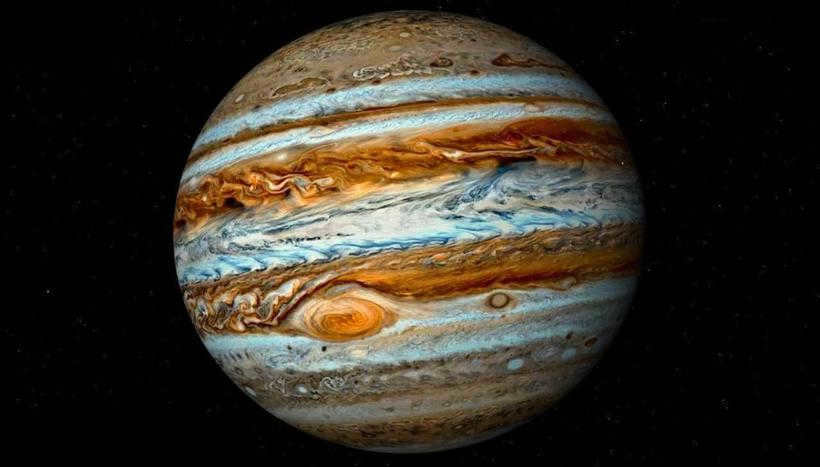
- Saturn – is renowned for its iconic rings. These were first observed by Galileo back in 1610, although he initially mistook them for satellites due to the limitations of his telescope.
- Uranus and Neptune – are also gas giants like Saturn and Jupiter. However, one unique feature of Uranus is that it is the only planet among the “Magnificent Eight” to have an orbit that is tilted on its side.
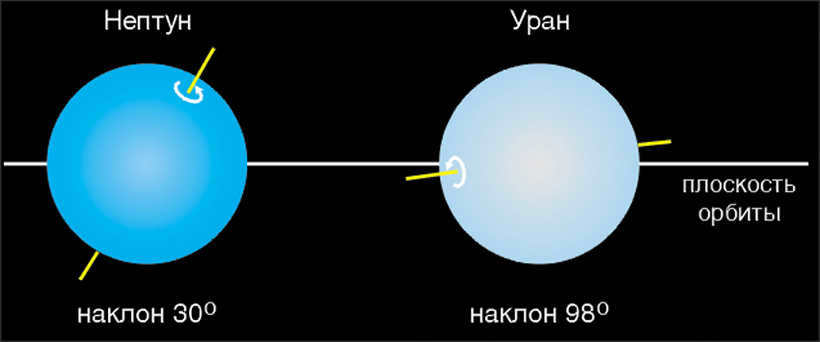
- Pluto – boasts a nitrogen atmosphere and beautiful nitrogen-methane ice caps.
- Haumea – this icy planet resembles a handball.
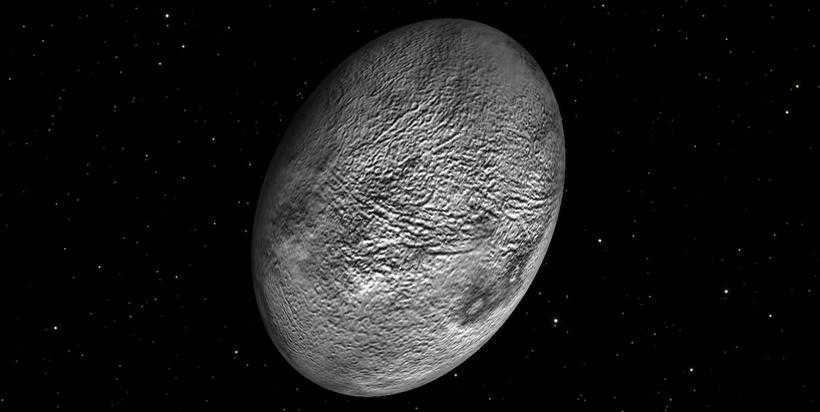
- Makemake – is still relatively mysterious, much like Cetsera 🙂
- Erida – is a dwarf planet and the largest among its four counterparts. It is also the farthest from the Sun.
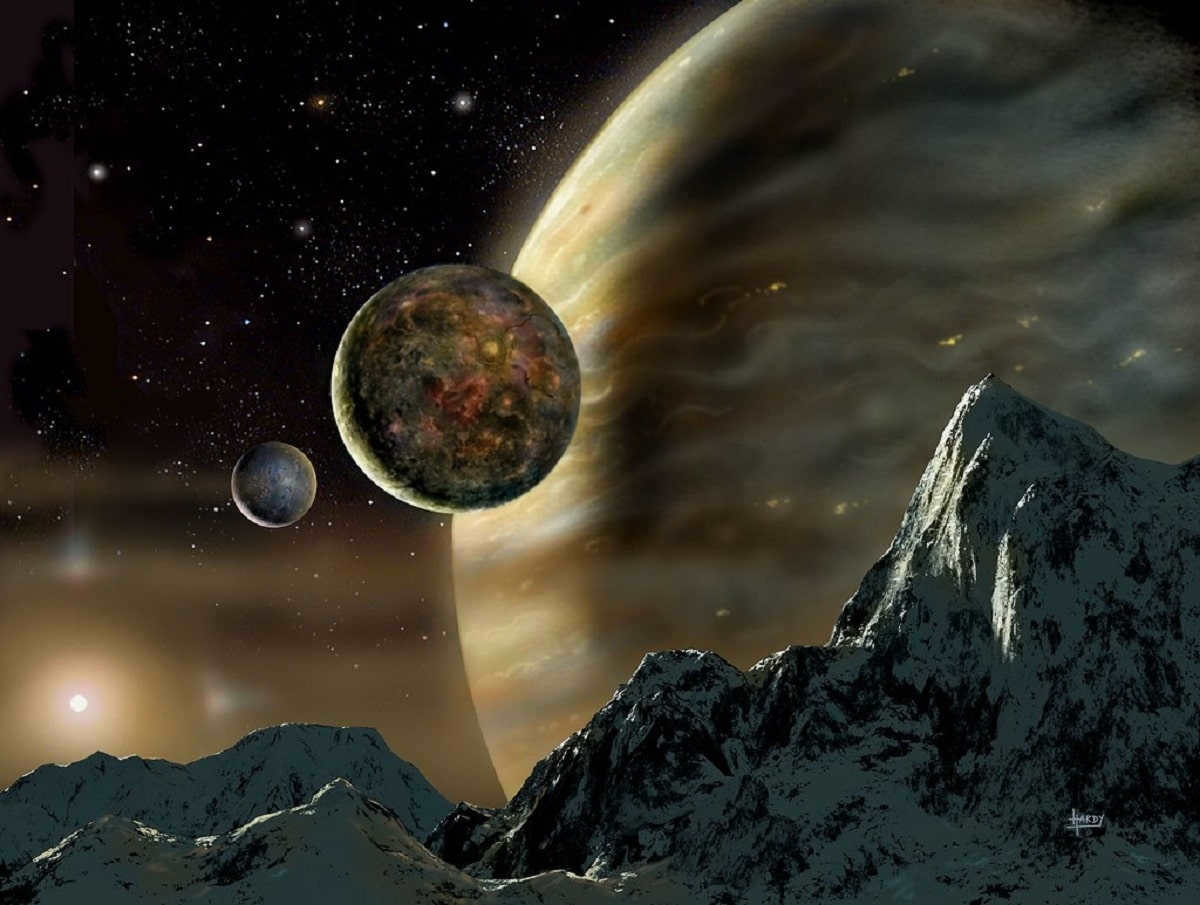
When examining all the planets in our solar system, they can be categorized into two types based on their location: the inner planets and the outer planets. In this article, we will concentrate on providing an explanation of the outer planets and their key features. These planets are situated beyond the asteroid belt and are commonly referred to as gas giants.
Within this piece, we will outline the distinctive characteristics of the outer planets and also share some intriguing facts.
Planets beyond the asteroid belt

As previously mentioned, the outer planets refer to those planets that are situated beyond the asteroid belt. These planets are commonly known as gas giants due to their composition, which primarily consists of large masses of gases orbiting around the sun. Although they do possess a solid core, it is not possible to traverse them directly through their center.
It is important to keep in mind that even now, Pluto is not recognized as a planet. Within the category of outer planets, we can identify Jupiter, Saturn, Uranus, and Neptune. All of these planets share similar characteristics. In order for a celestial object to be classified as a planet, it must adhere to certain criteria. Firstly, it should not emit its own light. Secondly, it must be sufficiently massive to maintain its shape under the influence of gravity. Lastly, it must possess enough mass for gravity to exert a force that attracts nearby objects and disturbs their orbital paths.
One more condition that lacks agreement among scientists is that a planet must have an orbit around a star. There are certain features that are often observed in these distant planets, such as the presence of rings and a multitude of satellites. Let’s examine each of these outer planets in detail and outline their key characteristics.
Jupiter, the biggest planet in the solar system, surpasses all others in size. In fact, its mass is twice that of the combined mass of all the other planets. To put it into perspective, Jupiter is a staggering 1,317 times larger than Earth. Upon descending to its surface, one would notice the gradual compression of gases leading to its core. These gases include hydrogen, helium, and argon, which serve as the primary elements comprising Jupiter. As we venture deeper towards the core, these gases become increasingly compressed, resembling a rocky structure.
In the later stages, we observe that the nucleus takes on a rocky form composed of these elements, but in a frozen state. The existence of actual rock on Jupiter has not yet been uncovered, hence its classification as a gas giant. One of the most captivating features of Jupiter is its prominent circular red spot, which is an indication of a massive storm that has been forming for over three centuries and shows no signs of abating. In relation to the planet’s size, the red spot may appear small, but when compared to the diameter of Earth, it is actually larger.
This celestial body boasts the swiftest rotational movement among all the planets in the solar system, with a day lasting a mere 10 hours. However, it takes 12 years for Jupiter to complete one orbit around the sun. Additionally, Jupiter is home to over 60 satellites, all of which are widely renowned. As the oldest planet in the entire solar system, Jupiter holds a special place in astronomical history.
Saturn
Saturn is most famous for its magnificent rings, which are visible from Earth. These rings are unique to Saturn and cannot be seen around any other planet in our solar system. In fact, Saturn is a whopping 750 times larger than Earth in size. As it orbits the Sun, Saturn is accompanied by around 62 moons, one of which is called Titan. Titan is of particular interest because it is believed to have had an atmosphere similar to our own in the distant past. While other planets also have rings, Saturn boasts the largest and most impressive ring system. These rings are composed of tiny particles, some as small as grains of sand, while others are as large as mountains.
Due to its lack of a solid surface, little is known about Saturn’s rotational period. Its atmosphere spins at different speeds depending on the latitude. Similar to Jupiter, the main gases present in Saturn’s atmosphere are hydrogen and helium. Additionally, it is worth noting that Saturn’s translation movement takes approximately 30 years to complete.
Uranus
Uranus is a planet that possesses a core, but what sets it apart from other planets is the presence of an icy mantle that extends to its surface. The composition of its atmosphere consists primarily of hydrogen and helium. The size of its nucleus is relatively small. One notable feature of Uranus is its distinct blue hue, which can be attributed to its extensive ice cover.
Uranus completes one orbit around the Sun in a period of 84 Earth years and it maintains an average distance of 3,000 million kilometers from the Sun. The rotational motion of Uranus is not uniform across all latitudes, which makes it difficult to study. Another interesting characteristic of this planet is its tilted axis, which results in one pole always facing the Sun. Consequently, Uranus experiences periods of 42 years of daylight followed by 42 years of darkness.
Neptune
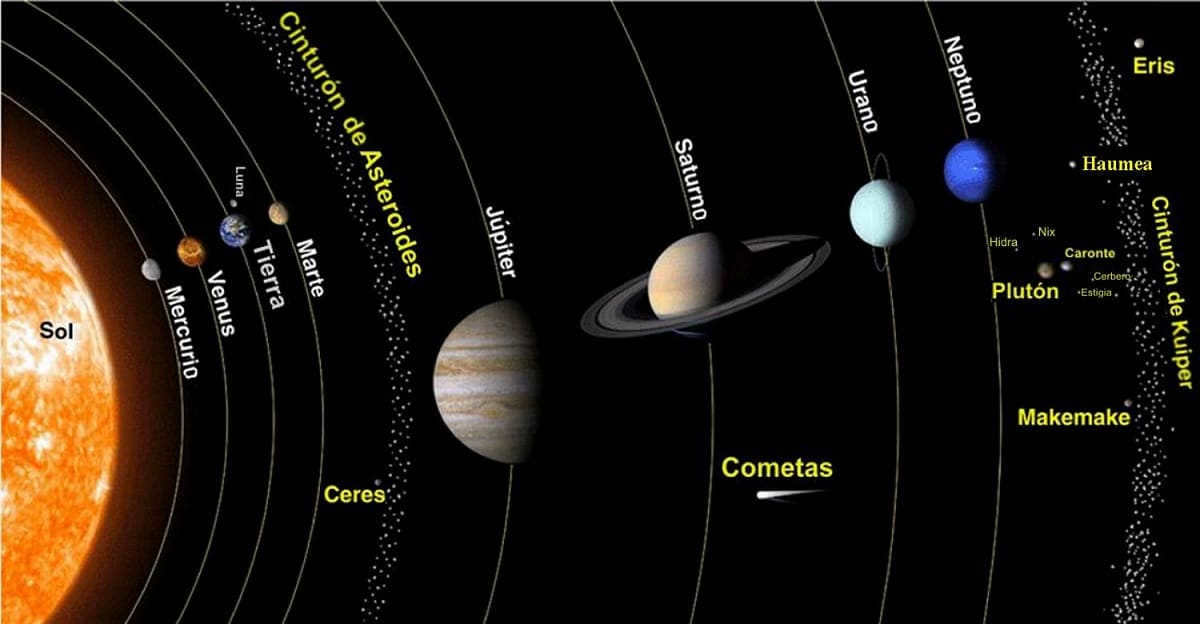
This is the final member of the outer planets group. It holds the position as the most distant planet in the entire solar system. Despite its small size, it still ranks fourth in diameter among all the planets. Despite its size, it maintains a gravity that is similar to our own planet. Its core is composed of silicates, nickel, and iron.. This planet possesses a large icy mantle and an atmosphere primarily consisting of hydrogen, helium, and methane.
Within this atmosphere, one can find intense storms with winds reaching speeds of up to 2,200 kilometers per hour. It is presently recognized as having 14 satellites orbiting around it. The most renowned of these is Triton.
By utilizing this knowledge, I trust that you will be able to expand your understanding of the outer planets and their key characteristics.
The information presented in this article adheres to our editorial ethics guidelines. If you find any errors, please click here to report them.
Summary of the Full Article: Network Meteorology " astronomy " Outer planets
A celestial body that orbits a star is known as a planet. It has a spherical shape and does not produce its own light.
According to the International Astronomical Union, a celestial body must meet the following criteria to be classified as a planet:
- It must orbit around a star.
- It must have enough mass to maintain hydrostatic equilibrium, meaning gravity can counterbalance pressure and form a spheroidal structure.
- It must have cleared its orbit of other objects, preventing any invasions.
Celestial bodies that fail to meet these requirements are referred to as asteroids or minor planets. Other objects, including smaller ones, are known as meteonts and micrometeorites.
Our solar system consists of eight planets: Mercury (symbol ☿), Venus (♀), Earth (♁ or ⊕), Mars (♂), Jupiter (♃), Saturn (♄), Uranus (♅), and Neptune (♆).
An image capturing planet Earth from the vastness of space.
Aside from the previously mentioned conditions, planets possess various characteristics, including their composition, structure, orbit trajectory, and different motions.
Planetary Composition
Planets can be comprised of solid substances and accumulated gases. The primary solid materials consist of silicate rocks and iron, while the gases are mainly hydrogen and helium. Additionally, planets also contain different types of ice, which include methane, ammonia, carbon dioxide, and water.
The proportions and specific makeup of these materials vary depending on the type of planet. For instance, rocky planets like Earth are primarily composed of rocky and metallic substances, with gases playing a lesser role. In contrast, gas giants like Jupiter are predominantly composed of gases and ice.
Planetary Structure
The composition of planets determines their internal structure. Rocky planets consist of:
- A solid or liquid core composed of multiple solid layers or molten material.
- Mantle: primarily composed of silicates, which are salts formed by combining a base with silicic acid.
- Crust: This is the outermost layer that encompasses rocky planets, as well as dwarf planets and satellites like the Moon. It can be continental or oceanic in nature and is chemically distinct from the mantle.
Gaseous planets also possess a core, although its properties have yet to be definitively determined. It is believed to be a mixture of rock and iron, metallic hydrogen, or ice. However, the majority of their mass is comprised of gas or liquid in a highly compressed state.
An illustration of the inner composition of a terrestrial planet (Venus) and a gas giant (Jupiter)
The Paths of Planets
Each planet orbits around a central star, following an elliptical trajectory. The velocity of the planet’s orbit is determined by its distance from the star. The farther a planet is from its star, the slower its orbital speed.
The movement of celestial bodies
Celestial bodies exhibit various types of motion:
- Translation: this is the movement of a celestial body around a central star.
- Rotation: this is the spinning motion of a celestial body around its own axis.
- Precession: Refers to the swaying motion of a celestial body’s axis as it gradually slows down.
- Nutation: It involves small oscillations that occur on top of the precession motion.
When it comes to our solar system, there are various ways to categorize the planets. The most common classifications include:
- Based on their proximity to the sun, they can be divided into inner and outer planets;
- Based on their composition, they can be categorized as rocky or gaseous planets.
Classification by Proximity to the Sun
The inner planets, also known as the lower planets, are the ones closest to the sun. They are located before the asteroid belt:
On the other hand, the outer planets, also known as the higher planets, are located at a greater distance from the sun. They are situated beyond the asteroid belt. These outer planets include:
By composition
The composition of the planets in our solar system can be classified into two main types:
1. Rocky planets, also known as terrestrial or telluric planets, are primarily composed of solid elements like silicate. Some examples of rocky planets include:
- Mercury
- Venus
- Earth
- Mars
2. Gaseous planets, on the other hand, are mainly composed of gases. They are often referred to as giant planets because of their significantly larger mass compared to rocky planets. Some examples of gaseous planets are:
- Jupiter
- Saturn
- Uranus
- Neptune
Planetoid
Planetoids and their accompanying moons
A planetoid is an astronomical object that meets only two criteria of a planet:
Planetoids are typically smaller than a full-fledged planet but larger than a moon.
What sets planetoids apart from the primary planets is their inability to clear their orbit of other celestial bodies.
Currently, there are officially recognized five planetoids:
Over three hundred celestial bodies are awaiting classification as planetoids.
Exoplanets
Exoplanets, also known as extrasolar planets, refer to celestial bodies that revolve around a star other than our Sun. Consequently, these planets exist beyond our solar system.
These planets were initially detected in 1992, marking a significant milestone in space exploration, thanks to the technological advancements facilitating enhanced space observation.
Presently, there have been 3,264 confirmed exoplanets, with a majority of them being massive gas giants.
There are numerous varieties of exoplanets that possess characteristics that deviate from the classification of planets found in our own solar system. Among these, there are five primary groups:
- Jupiter-type: These are gas giants that can be up to 80 times more massive than Earth. They are further categorized into hot Jupiter and cold Jupiter.
- Neptune-type: These planets are slightly less massive than Jupiter-type, but always larger than Earth. They are further divided into hot Neptune and cold Neptune.
- Super Earths: This group includes all planets with a mass 1-10 times greater than that of Earth.
- Earths: Also referred to as former Earths, these planets have a mass similar to our own Earth. One notable example is the minineptune.
- Subterrestrials: This group encompasses planets with a mass lower than that of Earth or Venus.
Additionally, there are various other types of planets that are less frequently encountered, including pulsar planets, planets composed of carbon (carbide or diamond), metazemes, chthonic planets, octolumbar planets, and wandering planets (also known as wanderers or orphans). Furthermore, certain hypotheses propose the existence of oceanic planets, lava planets, iron planets, and helium planets.
What is the process of planet formation?
The formation of planets begins with the movement of dust and gases around young stars. Over time, these substances gather and are deposited in a disk that surrounds the star.
As a result, small globules known as planetesimals are formed. These planetesimals have the ability to attract more matter to themselves, gradually growing in size.
Eventually, the heat and light emitted by the central star cause the gases to dissipate, leaving behind solid matter that consolidates into planets.
To put it simply, a planet is an object that orbits the Sun, is spherical or nearly spherical due to its mass, is not a satellite of any other object, and has cleared its orbit of similar space bodies.
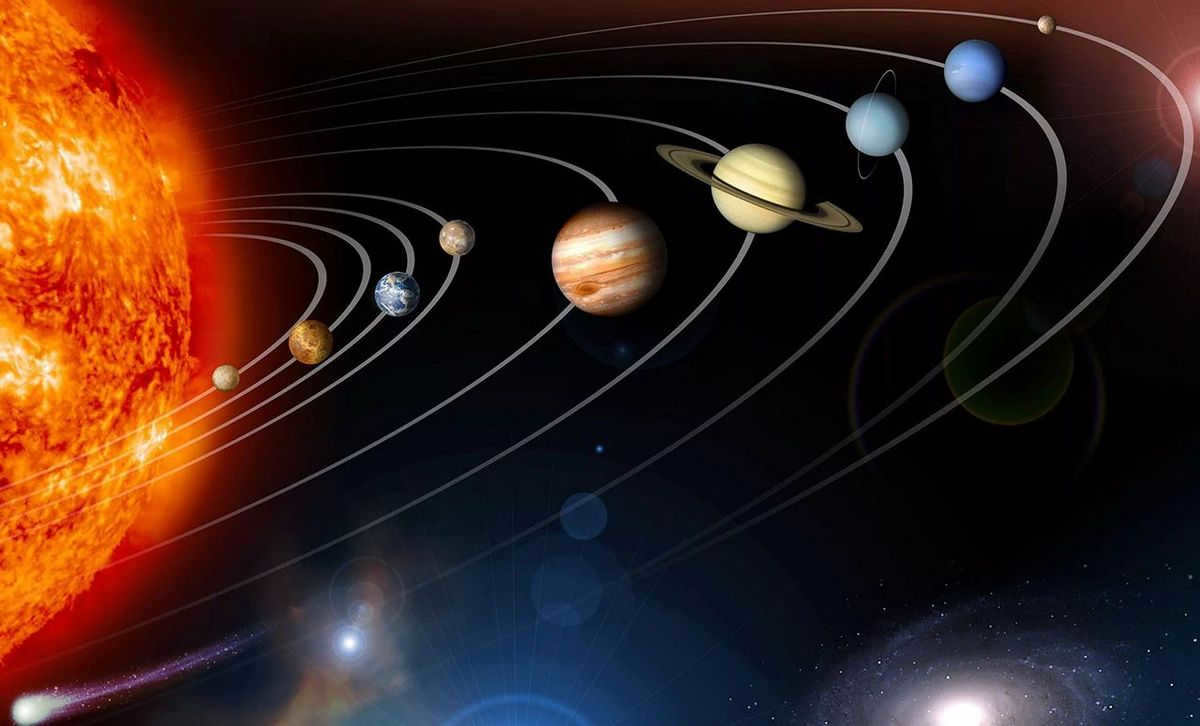
NASA is credited with the discovery of the eight planets of the solar system and Pluto.
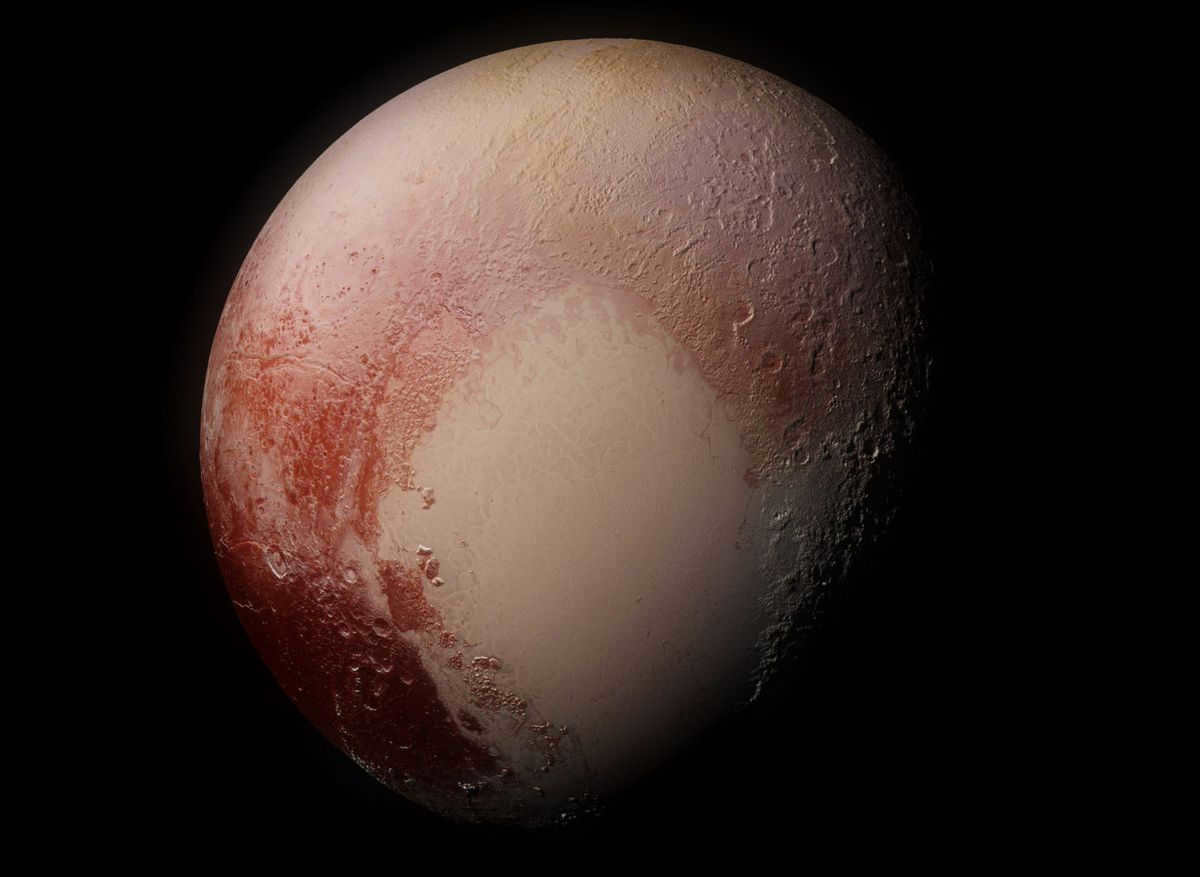
Pluto. Credit: NASA/JHUAPL/SwRI/ Seán Doran
The History of Planets
In addition, the use of telescopes has unveiled the existence of celestial bodies that were previously unknown in ancient times due to their great distance or small size, making them invisible to the naked eye. On March 13, 1781, English astronomer William Herschel discovered Uranus, and on January 1, 1801, Italian astronomer Giuseppe Piazzi first observed Ceres, originally classified as a planet but later reclassified as an asteroid. Finally, in 1846, Neptune was discovered.
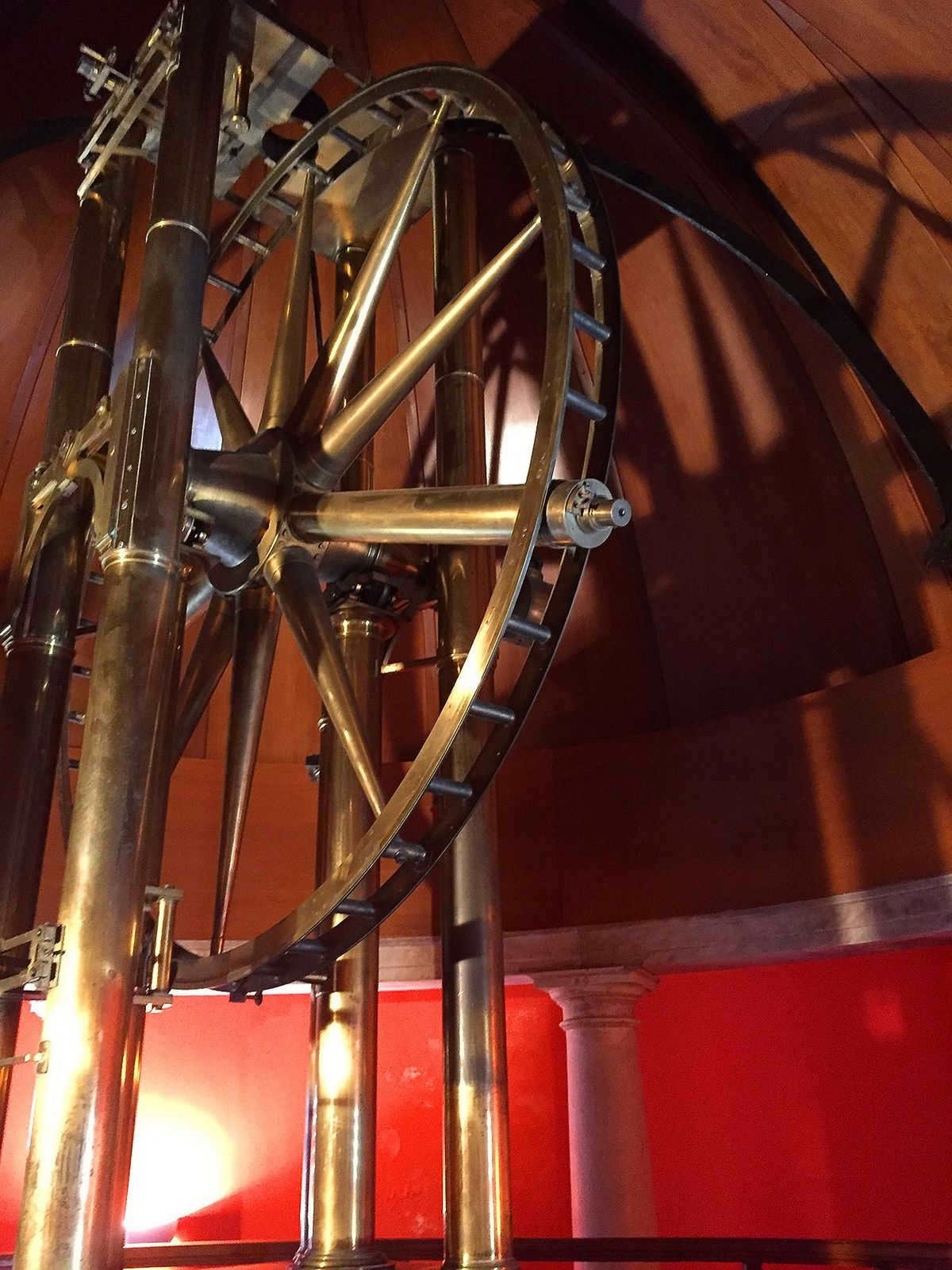
Giuseppe Piazzi first observed Ceres using this instrument. Credits: NASA/JPL-Caltech/Palermo Observatory
Exploring new worlds
There was a period of calm and for a considerable time, no celestial bodies of similar size to Pluto were discovered. However, everything changed in the 2000s when Michael Brown, a young astronomer at the California Institute of Technology (USA), initiated a search for objects in the outer solar system as part of his research project.
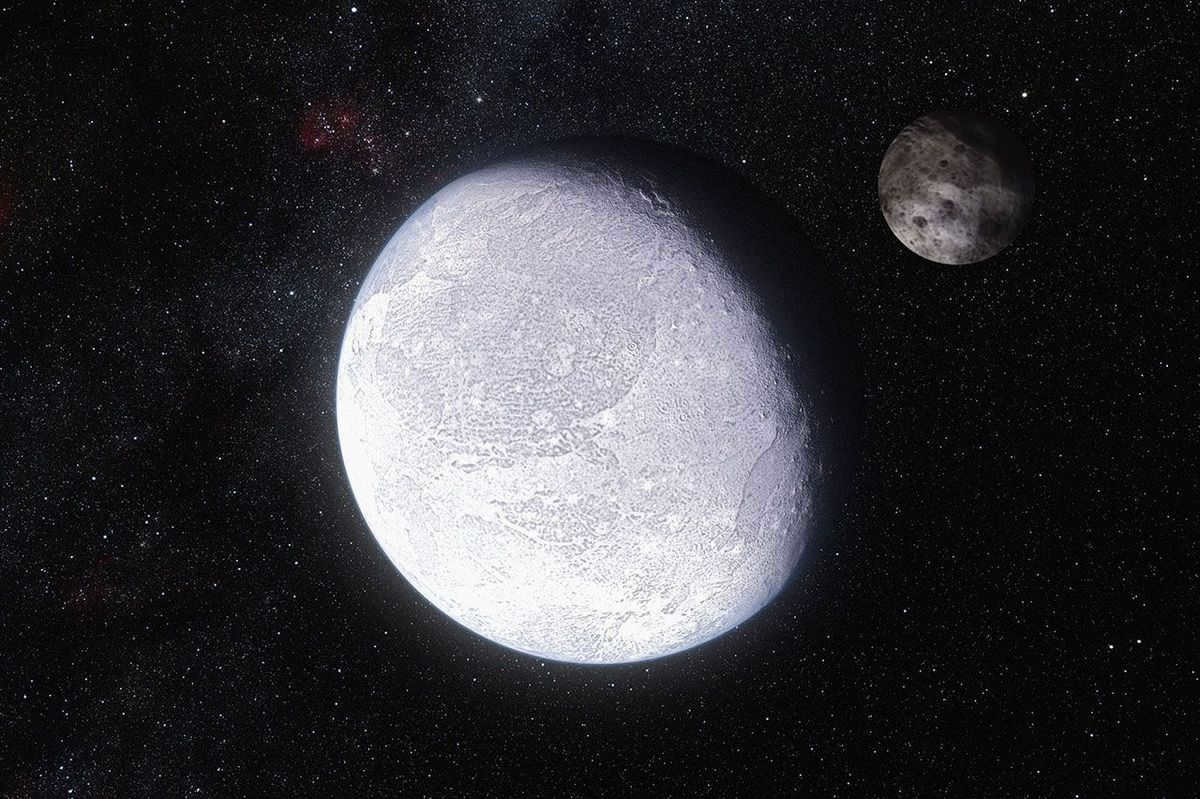
The artist’s interpretation shows the dwarf planet Erida and its moon Dysnomia. Credit: ESO.
Voting and Consequences
Following a series of discoveries, the International Astronomical Union (IAU) conducted a thorough examination of the evidence. In 2006, during the XXVI assembly held in Prague, Czech Republic, a vote was held to redefine the criteria for a planet. As a result, Pluto, Erida, and other similar-sized objects were reclassified.
Under the new definition, a dwarf planet is an object that orbits the Sun and is approximately round in shape, but smaller than Mercury. Currently, there are officially recognized five dwarf planets: Ceres, Pluto, Erida, Makemake, and Haumea.
There are numerous other cosmic bodies that have the potential to be included in this roster in the future. These include Quavar, Sedna, Orcus, and Salacia. However, in order for them to be officially recognized, further observations are required to determine their exact sizes. Furthermore, certain astronomers speculate that the Kuiper belt might actually harbor up to 200 dwarf planets.
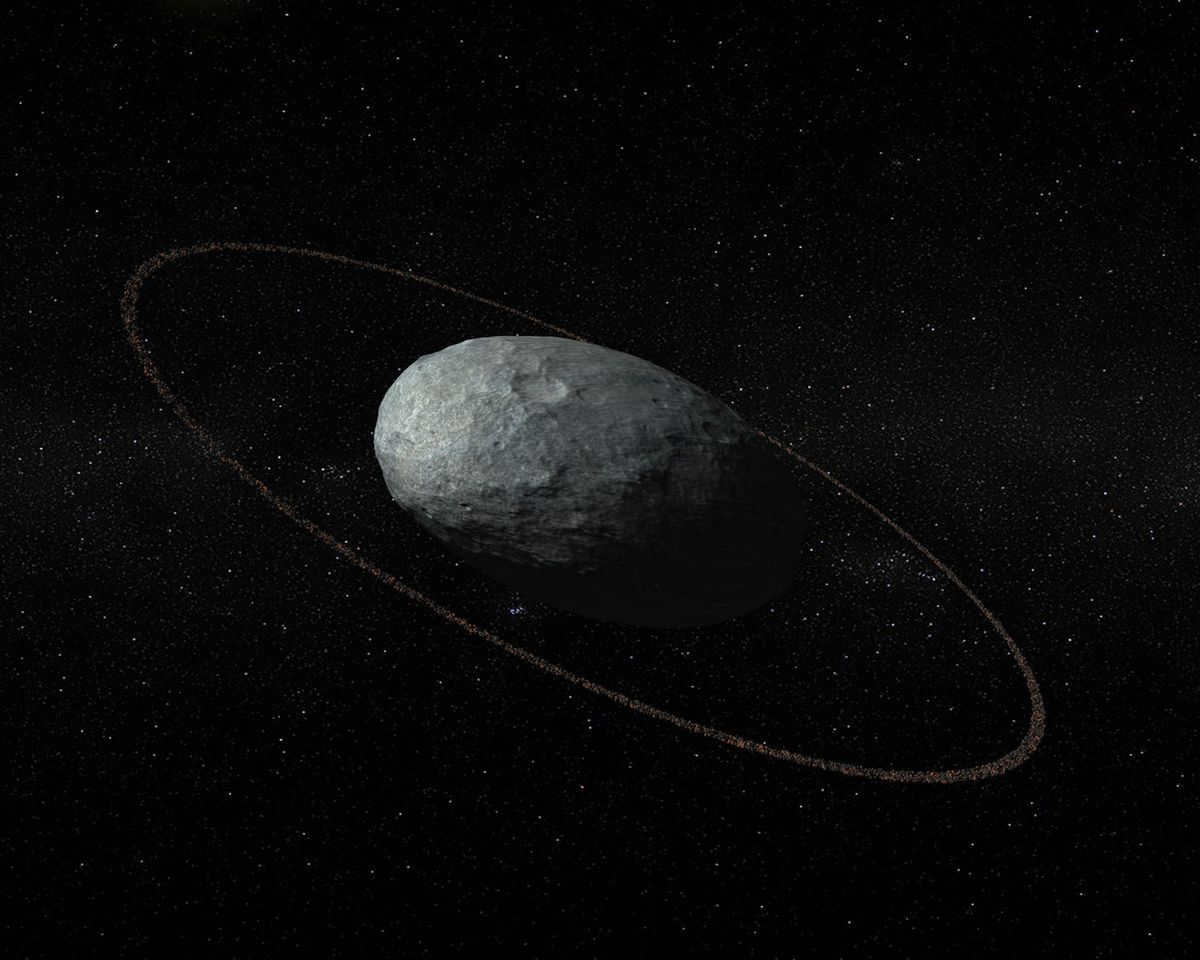
The illustration shows the ring encircling the dwarf planet Haumea. Credit: IAA-CSIC
A celestial body that orbits a star and has a spherical shape, without emitting its own light, is known as a planet.
The International Astronomical Union has established the following criteria for a celestial body to be classified as a planet:
- It must revolve around a star;
- It must have enough mass for gravity to balance out pressure and form a spheroidal structure, a state known as hydrostatic equilibrium;
- It must have cleared its orbit of other objects, preventing any invasions.
Celestial bodies that fail to meet these criteria are referred to as asteroids or minor planets. Smaller bodies, including meteors and micrometeorites, fall into a separate category.
A picture depicting the Earth as seen from outer space.
Distinctive features of celestial bodies
Aside from the aforementioned conditions, celestial bodies possess specific attributes, including their elemental composition, structural configuration, orbital path, and the multitude of movements that they execute during their celestial journey.
Planetary Composition
The composition of planets can vary, with some being made up of solid materials while others have a combination of both solid and gaseous components. The solid materials found in planets are typically rocks that consist of silicates and iron. In addition, there are gases present, mainly hydrogen and helium. Furthermore, planets can also contain different types of ice, including methane, ammonia, carbon dioxide, and water.
The specific proportions and types of these materials will differ depending on the type of planet. For instance, rocky planets like Earth are primarily composed of solid rocky and metallic materials, with gases playing a lesser role. On the other hand, gaseous planets like Jupiter are predominantly made up of gases and ice.
Planetary Structure
The composition of planets determines their internal structure. When it comes to rocky planets, they consist of:
- A solid or liquid core, which is made up of multiple solid layers or molten material.
- Mantle: This layer is primarily composed of silicates, which are salts formed by combining a base with silicic acid.
- Crust: Found on rocky planets, as well as dwarf planets and satellites like the Moon, the crust can be either continental or oceanic. It is differentiated from the mantle based on its chemical composition.
Gaseous planets, on the other hand, have a core with uncertain characteristics. It is believed to be a combination of rock and iron, metallic hydrogen, or ice. However, the majority of their mass is made up of gas or compressed liquid.
An illustration of the internal composition of a solid planet (Venus) and a gaseous planet (Jupiter)
Orbits of the Planets
Each planet revolves around a star in an elliptical trajectory. The velocity of their journey is determined by the distance from the sun. The further away they are, the slower their orbital speed will be.
Movement of celestial bodies
The celestial bodies exhibit various types of motion:
- Translation: this refers to the movement of a celestial body around a star.
- Rotation: is the spinning motion of a celestial body around its own axis.
- Precession: is the gradual change in the orientation of a celestial body’s axis.
- Nutation: It involves small oscillations that occur on top of the precession motion.
When it comes to our solar system, there are various methods of classifying the planets. The most frequently used ones are as follows:
- based on their distance from the sun, they can be categorized as inner and outer planets;
- by their composition, planets can be classified as either rocky or gaseous.
Due to their proximity to the sun.
The inner planets, also referred to as the lower planets, reside in the closest orbit to the sun, positioned ahead of the asteroid belt:
The outer planets, also known as the higher planets, encompass those that are situated at a greater distance from the sun, as they are positioned beyond the asteroid belt. Outer planets:
Through composition
The planets in our solar system can be classified based on their composition. They can be grouped into two primary categories:
Terrestrial planets, also known as rocky or telluric planets, consist of solid elements such as silicate. Some examples of terrestrial planets include:
Giant planets, on the other hand, are predominantly made up of gases. They are often referred to as gas giants because they are significantly more massive than their rocky counterparts. Examples of gas giants include:
Dwarf planet
Dwarf planets and their moons
A dwarf planet is a type of celestial object that meets only two criteria for being classified as a planet:
Dwarf planets are typically smaller than planets but larger than moons.
What sets dwarf planets apart from the main planets is their inability to clear their orbit of other objects.
Currently, there are five officially recognized dwarf planets:
There are over three hundred celestial bodies that are candidates for being classified as dwarf planets.
Exoplanets, or extrasolar planets, are celestial bodies that revolve around a star other than our Sun. Therefore, they are planets that exist beyond the boundaries of our own solar system.
These exoplanets were initially identified in 1992, thanks to significant advancements in technology that enabled more precise observations of outer space.
As of now, a total of 3,264 exoplanets have been officially confirmed to exist. The majority of these exoplanets are classified as gas giants.
Categories of exoplanets
There exists a wide range of exoplanets that possess unique characteristics that defy the conventional planetary classification observed within our solar system. These exoplanets can be broadly categorized into five distinct groups:
- Jupiter type: These are gas giants that boast a staggering mass up to 80 times greater than that of Earth. They can be further classified as either hot Jupiter or cold Jupiter.
- Neptune types: These exoplanets are slightly less massive than the Jupiter types, but always larger than Earth. They can be further classified as either hot Neptune or cold Neptune.
- Super Earths: This group encompasses planets with a mass ranging from 1 to 10 times greater than that of Earth.
- Earthlands: Also referred to as former earths, these exoplanets possess a mass similar to our own Earth. This category includes a variant known as minineptune.
- Subterranean: Exoplanets in this group possess a mass that is less than that of either Earth or Venus.
What is the process of planet formation?
As per the prevailing theory, young stars are surrounded by a disk of dust and gases. Over a period of time, these materials undergo certain movements and interactions, eventually leading to the accumulation of particles within the disk.
These particles gradually come together to form globules known as planetesimals. As the planetesimals grow larger, they attract more matter, resulting in the formation of even larger objects.
The gases present in the disk are eventually expelled due to the heat and light emitted by the central star. This allows the solid matter to become more consolidated and stable.
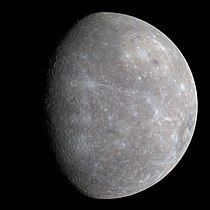
The solar system consists of two main classes of planets: large, low-density giant planets and smaller, earth-like planets with solid surfaces. According to the International Astronomical Union, there are a total of 8 planets in our solar system. Starting from the closest to the Sun, the four earth-like planets are Mercury, Venus, Earth, and Mars, followed by the four giant planets: Jupiter, Saturn, Uranus, and Neptune. Additionally, there are at least 5 dwarf planets in our solar system: Pluto (which was considered the ninth planet until 2006), Makemake, Haumea, Erida, and Ceres. Except for Mercury and Venus, all planets have one or more satellites orbiting around them.
By November 16, 2020, scientists have confirmed the presence of 4374 exoplanets in 3234 planetary systems, with 715 of them having multiple planets. These exoplanets vary in size, ranging from Earth-sized planets to larger than giant planets [4].

Astronomy is a captivating and mysterious field of study that encompasses not only mind-boggling discoveries, intriguing puzzles, and daring theories, but also sheds light on everyday occurrences that we witness on a daily basis. In this article, we will delve into the most astounding information about our solar system, where our planet Earth coexists with neighboring planets and enigmatic celestial entities.
What is the Solar System
Among the countless points of stars that decorate the night sky, some shine brighter and are closer to us than others. These particular stars have fascinated humans since ancient times, and as our scientific knowledge has grown, we have distinguished them from the rest and given them the collective name of the "planets". Alongside Earth, these distant and enigmatic worlds form a unified system, with the Sun occupying a central and dominant position. The orbits of the major planets all lie almost within the same plane, forming the structure of our solar system. This remarkable system is estimated to be around 4.5 billion years old.
The solar system is a blazing celestial body that encompasses eight planets along with their satellites, galaxies, stars, comets, black holes, and other awe-inspiring astronomical entities.
The planets are commonly arranged in order of their proximity to the Sun: Mercury, Venus, Earth, Mars, Jupiter, Saturn, Uranus, and Neptune. Beyond the furthest planet lies the Kuiper belt, a region housing a minimum of 4 dwarf planets, including Pluto, which was classified as a planet within the solar system until 2006.
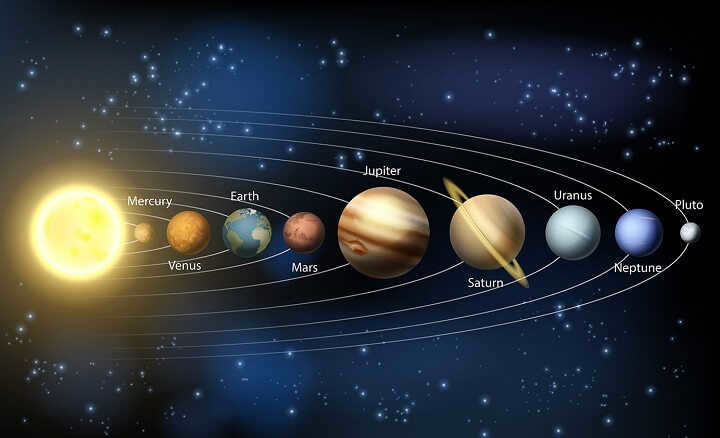
Interesting Facts
Thanks to scientific advancements, many mysteries of the solar system have been revealed and we now have some understanding of it. Here are some surprising and unique facts:
- Except for Mercury and Venus, all planets have satellites ranging from one to several dozen.
- Out of the four planets closest to the Sun, Earth is the largest. Venus is slightly smaller, Mars is 7 times smaller than Earth, and Mercury is 20 times smaller.
- Planets can be observed through a telescope not only at night, but also during the day. The brightest planet, Venus, is particularly visible in the daytime sky. Under favorable conditions, some planets can even be seen with the naked eye during the day, but their exact location must be known.
- Jupiter’s immense size, being 1300 times larger than Earth, allows it to gravitationally capture and pull in space debris, thus acting as a protective shield for our planet. This phenomenon occurs because Jupiter’s powerful gravity attracts comets and other celestial objects towards its surface, where they harmlessly collide.
- Located between Mars and Jupiter, there exists a cluster of small planets known as planetoids. Among these celestial bodies, the largest is the planet Ceres. However, even Ceres pales in comparison to the size of our Moon.
- Mercury lacks a dense atmosphere because it orbits the Sun in a manner similar to the Moon’s orbit around the Earth. This means that one side of Mercury is always facing the Sun, resulting in eternal summer, while the other side experiences continuous night and eternal winter. Without an atmosphere, Mercury is unable to shield itself from collisions with comets and asteroids, leading to its surface being covered in craters.
- In the early 20th century, there was a rumor circulating about the disappearance of Saturn’s rings. This caused widespread fear, as people believed that the ring debris would hurtle towards the Sun and eventually crash into Earth. Although this news caused a considerable uproar, the rings did not actually disappear; they simply became temporarily invisible.
- Jupiter is home to over 60 moons. Researchers speculate that Europa, one of its satellites, could potentially harbor alien life forms.
- Uranus stands out as the sole planet in our solar system that spins on its side. This peculiar axial tilt may be the result of a colossal celestial collision that occurred billions of years in the past.
The most scorching planet
Venus is widely regarded as the most scorching planet in the solar system, being the closest to us out of all its sibling planets. Venus boasts an incredibly dense atmosphere, with its upper layers being plagued by toxic acid rain. Its average surface temperature reaches a blistering 462°C. It is often referred to as Earth’s celestial counterpart, due to the striking similarities in size between the two planets.
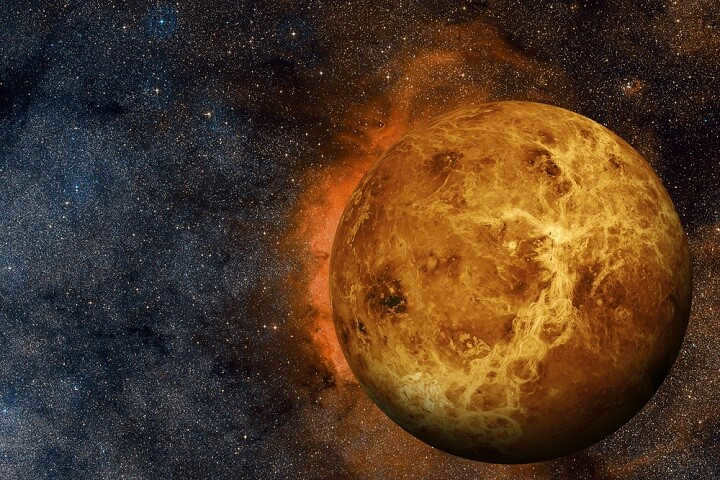
When gazing at the night sky, Venus appears as the most radiant star. It can be observed in the western part of the sky during evenings and sometimes in the morning in the eastern sky. It is commonly referred to as Utritsa, Zoryanka, Zarnitsa, or the Evening Star.
A complete orbit around the sun on Venus takes 225 Earth days, while a single day on the planet lasts 243 Earth days.
Despite the fact that the sun on Venus shines twice as bright as our own, clear days are a rarity. This is due to the constant presence of thick clouds in Venus’ atmosphere, which engulf the entire sky.
Venus undergoes phases that resemble those of the Moon, transitioning from a slender crescent to a full disk. Due to the Sun’s illumination, only one hemisphere of the planet is visible to us at any given time. When the illuminated side is facing away from us, we can only observe the thin crescent shape, while the rest of the planet remains hidden. The maximum brightness of Venus occurs approximately three weeks after the “new moon” phase, during which its luminosity is 13 times brighter than the brightest star in the night sky, Sirius.
There is still much that remains unknown about the solar system, making it impossible to pinpoint its precise boundaries. Previously, it was believed that the boundaries of the system extended to Pluto, but ongoing scientific discoveries have revealed the existence of new objects that orbit the Sun at even greater distances than the most recently discovered planet. These objects collectively form what is known as the Kuiper belt.
The Kuiper belt is a vast band of debris, similar in nature to an asteroid belt but primarily composed of icy objects.
Astronomers identify four dwarf planets in the Kuiper Belt – Haumea, Makemake, Erida, and Pluto. Among them, Pluto is the largest. Beyond the Kuiper Belt, there is the Oort cloud – a celestial object housing billions of cometary nuclei that have existed since the formation of our solar system. Situated a staggering 50,000 astronomical units away from the Sun, the Oort cloud is a thousand times more distant than Pluto. Conventionally, the Oort cloud marks the outer boundaries of our solar system.

The composition of the Earth is primarily comprised of rare elements
When it comes to its overall makeup, the Earth is primarily composed of the following elements:
- oxygen;
- iron;
- silicon;
- magnesium;
- sulfur;
- nickel;
- calcium;
- sodium;
- aluminum.
Accounting for 92% of the Earth, the first five elements dominate, leaving only about 8% for the remaining elements. While these elements can be found in various locations throughout the universe, they are typically present in trace amounts, overshadowed by the abundance of hydrogen and helium. Thus, it can be concluded that the Earth is primarily composed of rare elements. This is due to the fact that the cloud from which our planet originated contained significant quantities of hydrogen and helium, which were subsequently expelled into space as a result of the sun’s heat during the Earth’s formation.
Pluto used to be part of the Solar System until 2006, when it was “demoted” to a dwarf planet known as “asteroid 134340” due to its small size. In terms of weight, Pluto is 416 times lighter than Earth, and its gravitational force is 16 times weaker than Earth’s.
Another planet that is missing from our solar system is a dwarf planet called Vulcan. Astronomers believed that Vulcan was located closer to the sun than Mercury. It was a small planet that could have potentially had an orbit between Mercury and the Sun. The existence of Vulcan was initially discussed 150 years ago to explain the unusual characteristics of Mercury’s orbit, but subsequent calculations and astronomical observations have disproven this hypothesis.
Moreover, recent research has proposed an alternative theory regarding the presence of a fifth colossal planet, resembling Jupiter, but ejected from the solar system as a result of gravitational interactions with the other planets.
We reside within the Sun’s atmosphere
The separation between the Earth and the Sun amounts to 150 million kilometers. To visualize this distance, it would require 11,000 globes placed end to end. Furthermore, if we were able to construct railway tracks on these colossal structures and embark on a train journey from Earth to the Sun, the expedition would last at minimum 200 years before we reach our desired destination.
The Earth revolves around the solar atmosphere, which stretches far beyond its visible surface. Thus, it can be stated that we reside within the very core of the Sun – evidence of this can be observed in the phenomenon of the aurora borealis, which occurs as a result of solar winds. This radiant display is also observable on other gas giant planets like Jupiter, Saturn, Uranus, and even the remote Neptune.
Titan Resembles the Earth
Titan, a moon of Saturn, stands out as the sole known moon with a dense atmosphere. Moreover, it possesses stable liquid lakes on its surface, a characteristic shared only with our own planet, Earth. These shared attributes make Titan’s atmosphere bear a striking resemblance to that of Earth.
Comprised primarily of carbon dioxide, with nitrogen making up approximately 78% of its atmosphere, Titan’s composition further strengthens the connection to Earth. Consequently, scientists have put forth the theory that Titan serves as an analog to the early stages of Earth. As a result, Saturn’s moon has emerged as a prime candidate for the search for extraterrestrial life within our solar system.
